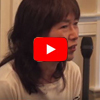Breath for the Bones: Tell Me a Story
Blog / Produced by The High Calling
I have never met Luci Shaw. Nor did I have the privilege to know her late husband Harold. But when Luci shared the story of Harold’s death in chapter three of Breath for the Bones: Art, Imagination, and Spirit: Reflections on Creativity and Faith—I wept for her. I wept with a deep cavernous grief that stayed with me and became part of who I am. I wept not only for this woman I do not know, but for all women who have lost their partner in life; I wept for myself in fear of such a loss. I wept for all who have loved in anticipation of their loss—for isn’t loss the gamble of loving?
I ask myself…why? Why did this story settle deep into my heart and impact me this way? The answer is the metaphor. Luci tells the story of the doing away with of a dead oak tree in her front yard shortly after Harold’s death.
It was then I realized why the felling of the tree occupied my thoughts so consistently and with such a sense of significance. It was because I was the frozen sod with the deep wound, and Harold was my tree who was simply…gone. How unreal it seemed that his roots, that had for more than thirty years penetrated deep into my life, that had anchored us and joined us so solidly and securely, had been eroded by the fire of decay. The space above ground that for so long had been filled with his vertical strength and solidity and shape was empty; air had rushed in where , before, the towering trunk had outbranched to leaves.
I have never lost a husband, but I understand the ways of a tree. I know how roots tendril deep—become tangled up in the soil of all that surrounds. I know the way a leaf gives air—makes room for deep breathing. And what to say of a tree’s shadow? How it gives shelter during storms and refreshment from the hot burn of scorching days?
A person can be all these things. And the metaphor of the tree names the loss—it adds more than tangency to the experience, but sentience as well. Through metaphor we are given the ability to feel—to experience with all our senses.
Jesus knew this. He knew the power of a metaphor.
A kaleidoscope of biblical metaphors illuminates Christ and his work and worth to us: He’s the bread freshly baked and broken. He’s the kernel of wheat that decays in the ground in order to sprout and produce more grain. He’s the wine poured out. He’s the cornerstone of the building. He’s the door to a sheepfold—the place of safety and rest. In the same setting the action changes and he is now the Shepherd who names and loves each sheep individually and leads them out to pasture as well as rescuing them from clinging brambles and mountain cliffs. He’s the powerful, untamed, golden-maned lion of royalty. By contrast, he is also the simplicity of a white-fleeced lamb, innocent, helpless, submissive, and sacrificial.
He spoke in story—in parables—to offer us truth in a way that stirs imagination and wonder. Parable—that word that shares the Greek root parabolḗ with our mathematical term parabola. Remember the parabola from geometry class? The parabola is that section of a cone that is able to bring parallel rays of light to a single focus point--a fact capitalized on by telescope makers who use parabolic-shaped mirrors in their optical design.
A parable can act in the same way: gathering light and magnifying—bringing close a focal point of truth through the integration of several points.
The parables were not merely meant to be dissected analytical; they were designed to be absorbed by the senses and the imagination and felt, the subtext of ideal, principle, and truth absorbed almost unconsciously as the mental image and the quickening power of narrative suffuse the understanding over a period of time…
We have talked about the power of story in this place before. Stories elicit active listening; they allow us to place ourselves in the narrative. But what does this truth mean in terms of faith and art?
…in the sacramental pattern of life, everything means something, everything may be a pointer to the holy…The more we see and accept divine revelation, the more we will be shown on earth and the better we will be prepared for the brilliance of heaven…When we see that narrative, including a moral crisis, is indeed made up of the physical elements—the material from which we are constructed—as we write or paint or dance or sing using those materials of life, we constantly hearken to the Bible’s model, which we see in the heart of our own creative process…
Everything means something. A tree is more than tree. Art uncovers these deeper meanings. And life itself transcends the skin and blood that confine the beating heart.
Join us next week as we discuss Chapter five, Celebrating Imagination and Chapter six, Listening to the Muse. If you'd like to join the conversation today, leave us a comment or link up below with more thoughts at your blog:
Image by Stallkerl. Used with permission. Sourced via Flickr. Post by Laura Boggess.





